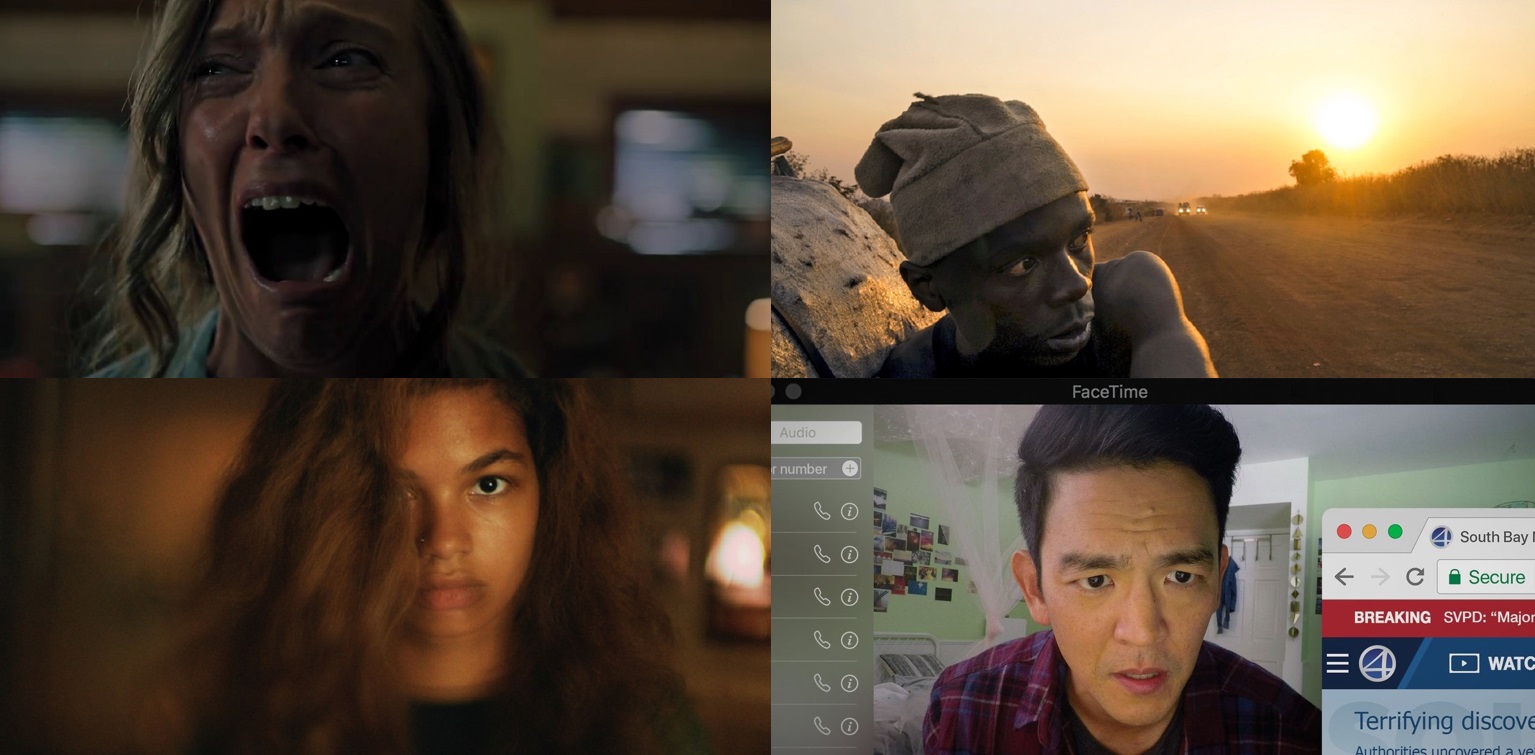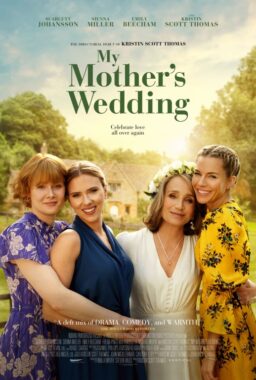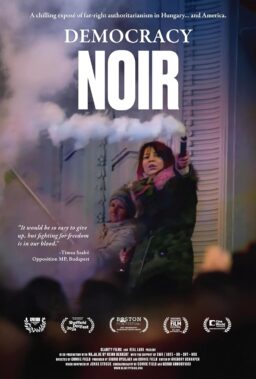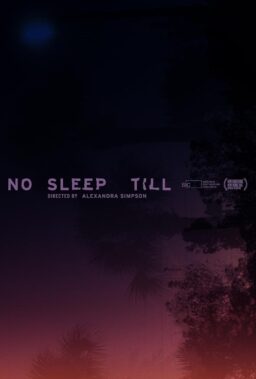Below is a small glimpse at my film year, a collection of the movies I was fixated on during and after festivals, recommended to you if you asked me what was good, or was simply blown away by. And in the case of my number one film, it was lodged so deep into my brain that its second-to-last shot made for a solid homemade Halloween costume. Of course, this list is subject to change at any minute, with special shout-outs to “Roma,” “Minding the Gap,” “Eighth Grade,” “Widows,” “Vice,” “Free Solo,” “If Beale Street Could Talk,” “Blaze,” and the laugh-out-loud quality of “Mile 22.”
10. “Bird Box”
In 2010, Susanne Bier made one of the most unforgettable stories about the immediacy of day-to-day violence with “A Better World,” its plot hinging on acts of humanism across continents. She brings that focus on how we treat each other to the ruthlessly thrilling “Bird Box,” which tops off a year of nervous cinema, but is approximately 300% more stressful than the silent but deadly “A Quiet Place” (nor can “Bird Box” have its logic poked through by the prospects of farts). The hook here is an apocalyptic disadvantage—one’s eyes must always be covered from an outside force that invades consciousness, making them want to hurt others or themselves.
Adapted by Eric Heisserer from the novel by Josh Malerman, “Bird Box” takes the set-up of a survival story to its most tense limits, where characters are walking, driving, or riding down a river through unknown environments, without being able to see where they are going. In a year in which watching white supremacy terrorize families in “The First Purge” seemed redundant, “Bird Box” is one of the most terrifying depictions of fanaticism; those who do decide to see sometimes have a frightening, monstrous power, and try to force others to look. It’s a scary reflection of our modern cults built on hatred, anonymous conspiracy theories, or willful misinterpretations of the Bible.
The whole of “Bird Box” hinges on dumb luck, but each major set piece has an inescapable claustrophobia, in which the ability to see what the blindfolded characters can’t, and imagining what could befall them, makes it that much more terrifying. At the center of it all is a top-level performance from Sandra Bullock, portraying a mother in the most desperate mode of survival. She makes a viewer even more wistful that somehow she and her two blindfolded kids can survive the film’s impossible world.

9. “Searching”
Aneesh Chaganty’s “Searching” is a thrilling correction to a few bugs in mainstream filmmaking: it’s an unabashed crowd-pleaser that doesn’t talk down to its audience, a tech-savvy movie that doesn’t lament the growing presence of smart phones and social media so much as whole-heartedly embrace them, and a screen-based thriller that isn’t just the cinematic equivalent of watching a desktop. That it’s also a thriller that gives John Cho the leading role he’s long deserved is just one of its many elements to adore.
Scripted by Chaganty and Sev Ohanian, this story about a father (John Cho) searching for his missing daughter Margot (Michelle La) is one of the year’s most exciting examples of creativity, with elements of filmmaking one can easily take for granted—it’s one of the year’s best edited films for how it creates an emotional roller coaster using only the content on its characters’ screens, orchestrating a narrative out of an insane amount of on-screen detail that fully immerses us in everyone’s lives. “Searching” plays wonderfully on repeat viewings, and the opening scene has deservedly won comparisons to the first ten minutes of “Up”—“Searching” is the debut of major storytelling talent, with a thrilling new perspective on the technology we use every day.
8. “John McEnroe: In the Realm of Perfection”
“John McEnroe: In the Realm of Perfection” is a sports documentary that begins with a Jean-Luc Godard quote, and doesn’t show its title subject until five minutes in. Yes, this movie is a dream for anyone who has felt film semiotics and sports analysis aren’t too different of beasts, especially when one talks about the strengths and weaknesses of a performance. Needless to say, “John McEnroe: In the Realm of Perfection” transported me back to my brain-fueling Film Studies classes, all focused around a pivotal match for the hot-head tennis player in 1984. This doc does not just thrill with how it toys with form, but also in how it proclaims the expansive potential of critical thinking. I dare anyone who is interested in the very concept of criticism, whether for athletes or filmmakers, to try to turn it off after watching it for those five minutes.

7. “Makala”
“Makala” popped into my life as a review assignment back in August, and by the end of the year it’s still the most exemplary idea of the power in minimalist storytelling. One of the most tense scenes this year is of Makala trying to push a huge bundle of coal, strapped to his bike, up a small hill, as captured with simplicity by director and cinematographer Emmanuel Gras. As it documents one man’s process in creating coal, carting it many miles and then trying to sell it, “Makala” speaks to the eternal values of filmmaking, and recognizes that walking many miles in someone else’s shoes is an instrumental part of it.
6. “Cold War”
Anyone who was a bit miffed by the ending of Damien Chazelle’s musical “La La Land”—not that it ended on a surprising note, but that it felt like an incomplete thought—will find refreshing heart and soul in Pawel Pawlikowski’s musician story, “Cold War.” Told over various years and across countries, the story of two Polish musicians and their romance in spite of years and geographical distance beautifully condenses time but doesn’t cut short its emotion. “Cold War” precisely captures the different chapters of a relationship, while having a black-and-white beauty that makes the film like the year’s best love ballad.
5. “Mandy”
Like a holy mix of “You Were Never Really Here” and “If Beale Street Could Talk,” as blended with a chainsaw fight and served on an actual dish of revenge, “Mandy” is one of the year’s most visceral proclamations of love and loss. Be not fooled by the howls from its growing cult audience, the best aspects of “Mandy” (directed by Panos Cosmatos and co-written with Aaron Stewart-Ahn) are not its albeit glorious action scenes but its sensitivity: this is the story of a man (Nicolas Cage), a woman named Mandy (Andrea Riseborough, her close-up laughing at macho BS the true face of this film) and the depths of his battling the demons of grief after his loved one is taken away. The late Johann Johannsson’s heavenly score uses synthesizers and heavy metal guitars to grip you from its opening text, and the film’s heavy use of color filters creates a dreamy atmosphere, which only gets kookier as “Mandy” becomes a straight-up hero odyssey with Cage battling phantasmagorical Jesus freaks. But the true beauty of “Mandy” is its intimacy; it’s as beautiful as looking into the eyes of your loved one as you both lie in bed, no one else existing in the world.
“Mandy” also features an unforgettable Nicolas Cage scene, in which he downs a whole bottle of vodka in a bathroom while standing in his underpants. He’s crying, howling, screaming. It epitomizes the appeal of one our greatest screen artists—that Cage is unafraid to tap into the absurd emotions we sometimes wish we could—and it pushes the surrealism of the scene to sincere and complete heartbreak. I’m placing “Mandy” in my proverbial “In Case of Loss, Break Glass” collection, right next to a copy of Philip Roth’s Everyman.
4. “Leave No Trace”
I really love what my colleagues have written about Debra Granik’s story of a PTSD-afflicted father living off the grid with his young daughter, but one of my favorite qualities of this nearly pitch-perfect story is that it’s not what you think: it’s not about them living in the woods, but adapting to our society, a story that takes place after what only seems like the true narrative. The completely soulful performances from Ben Foster and Thomasin Harcourt McKenzie create a family dynamic you don’t want to see disturbed, and through small developments there’s a large unease that capitalism and technology could get in its way. Granik’s script, adapted with Anne Rossellini from Peter Rock’s book, has an incredible rhythm with its bare bones scenes, exploring the greatest of emotional stakes in the most deceptively simple way.

3. “Madeline’s Madeline”
In a sense, “Madeline’s Madeline” is a movie that was made for its debut lead, Helena Howard. You understand, about thirty seconds into the film, why Howard warrants her own project, and why a filmmaker like Josephine Decker would mix her own experimental and primal instincts with the talents of her future young star. “Madeline’s Madeline” is delightfully beyond words—describing it as a film about acting and actors is just scratching the surface—but it’s one of the most year’s most hypnotic movies, especially as Decker’s camera toys with point-of-view and takes an approach to editing that is unlike any other film from 2018.
2. “Shirkers”
I spent much of my Sundance last January recommending to people a little documentary called “Shirkers,” and ramped up that practice when it came out on Netflix this past October. Believe the hype for this movie, which just took our #6 spot on the staff list, and is one of the few docs that has been making waves on #FilmTwitter. It’s both a celebration of and a mystery movie about the lost treasure of a film project that Tan directed as a teenager in 1990s Singapore with her friends, which then disappeared along with her pushy filmmaking mentor, an older white man named Georges, before the film was finished. “Shirkers” has Tan investigating what happened to the project and looking back at her life when she was a teenager making her cool-as-hell film that predates the style of “Ghost World” and Wes Anderson. Perhaps best of all, Tan shares with us the filmmaking daydreams, and the collaborating women, that fueled such an enigmatic passion project.

1. “Hereditary”
I believe “If Beale Street Could Talk” director Barry Jenkins put it best when he once tweeted to “Hereditary” writer/director Ari Aster, “GIVE ME BACK MY PEACEFUL SLEEP,” followed by six crying emojis. Speaking as someone who has now seen Aster’s masterful debut five times (including an experimental, not recommended double feature at the theater with Fred Rogers doc “Won’t You Be My Neighbor?”) I can only affirm the lasting power of “Hereditary” and its perfection as a modern American family tragedy that uses horror language in order to devastate its viewers.
There are so many elements to cherish about the film, including its exact creepiness with slow-moving shots and deceptively long takes, a score by Colin Stetson that peacefully conjures the devil, and the way that while a first viewing may inspire one to watch it through their fingers, “Hereditary” only gets more disturbing with each viewing. And all of this for a horror film that’s about a household that doesn’t discuss trauma, or about a family plot that’s a highway to hell. Most importantly, however, is the emotional magnitude brought by the likes of Toni Collette, whose viciousness as the central mother can rival the terror of Joan Crawford proclaiming “No more wire hangers” in “Mommie Dearest,” and Alex Wolff, depicting the shattered, silenced nature of trauma.
“Hereditary” is in the tradition of disturbing films like Kubrick’s “The Shining” or Zulawski’s “Possession“—it’s equal parts terrifying and exhilarating, scarring a viewer with the emotional turmoil that’s in the foreground. Aster’s film messed me up in more ways than one in 2018, and it hurts so damn good.












